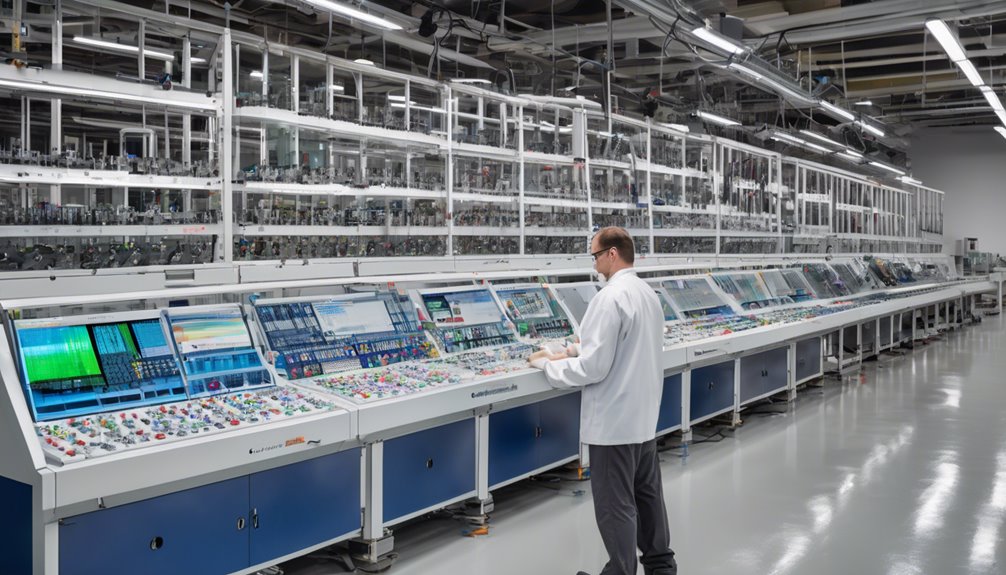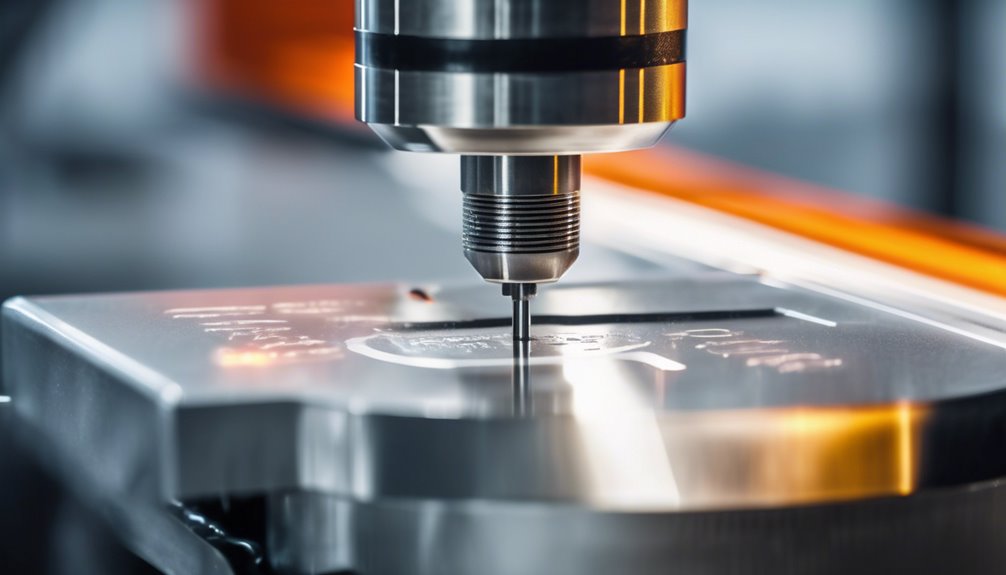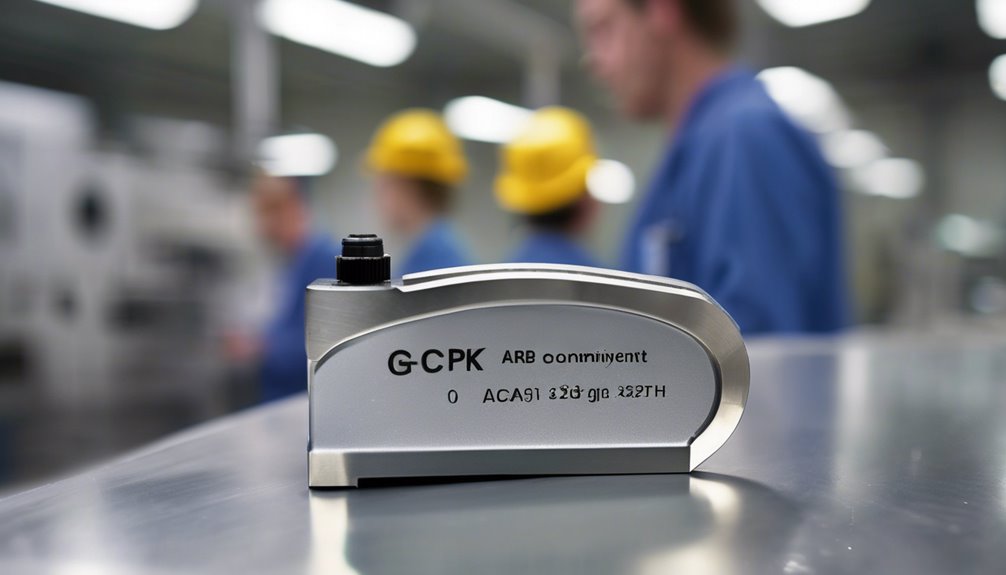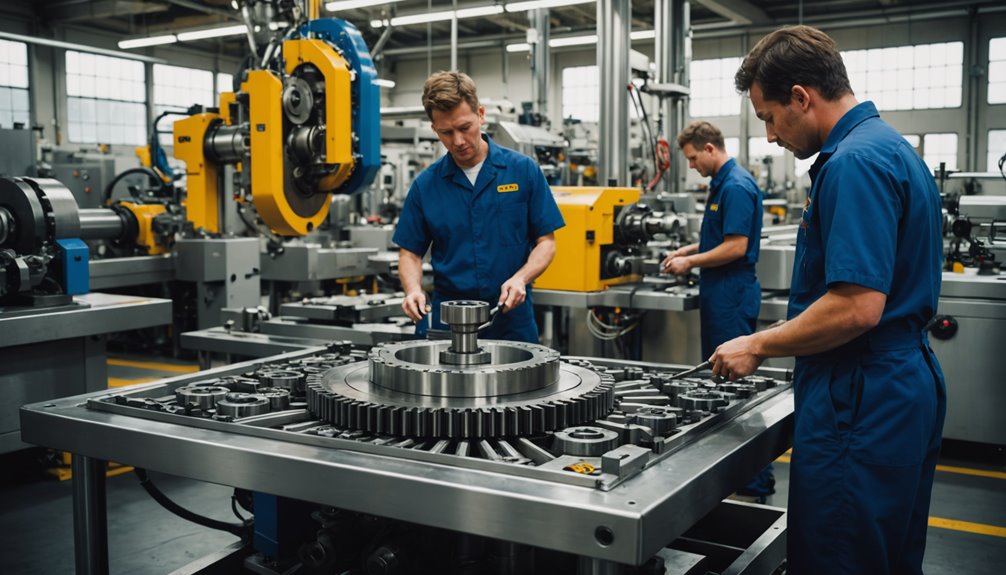In manufacturing, understanding Cpk is crucial for assessing how well your processes meet specifications. It helps you identify potential quality issues and improve production consistency. By analyzing Cpk values, you can pinpoint where enhancements are needed. But what do those numbers really mean for your operations? And how can you leverage this information to boost efficiency and reduce defects? Let's explore these questions further.
What Is Cpk in Manufacturing?

Cpk, or process capability index, is a crucial metric in manufacturing that helps you assess how well a process can produce products within specified limits. It measures the process's ability to generate output that meets quality standards.
Essentially, Cpk compares the width of the process distribution to the width of the specification limits. A higher Cpk value indicates a more capable process, meaning fewer defects and higher consistency in product quality.
To calculate Cpk, you'll need to determine the mean and standard deviation of your process data. By understanding Cpk, you can identify areas for improvement, optimize your processes, and ensure you're meeting customer expectations.
This metric plays a vital role in your overall manufacturing efficiency and product reliability.
Importance of Cpk in Quality Control
Understanding the importance of Cpk in quality control is essential for any manufacturing operation aiming to deliver consistent products.
Cpk helps you measure how well your process performs relative to its specifications. By analyzing Cpk values, you can identify areas that need improvement, ensuring your products meet customer expectations.
When you maintain high Cpk levels, you reduce variability, leading to fewer defects and better overall quality. This not only boosts customer satisfaction but also enhances your reputation in the market.
Implementing Cpk practices can streamline your processes and increase efficiency, saving both time and money.
Ultimately, focusing on Cpk in quality control allows you to drive continuous improvement and achieve long-term success in your manufacturing endeavors.
How to Calculate Cpk

To calculate Cpk, you'll need to gather specific data about your process and its specifications.
First, identify the process mean (( mu )) and the standard deviation (( sigma )). Next, define the upper specification limit (USL) and lower specification limit (LSL) for your product.
Now, use the following formulas: Cpk = min((USL – mu) / (3sigma), (mu – LSL) / (3sigma)). This calculation helps you understand how close your process is to the specification limits. A higher Cpk indicates better capability.
Make sure your data is reliable, as it directly impacts your Cpk result. Regularly recalculating Cpk can help you monitor and improve your process performance over time. Understanding process capability is essential for assessing how well your production meets specified limits.
Understanding Process Capability
Process capability refers to how well a manufacturing process can produce products that meet specified limits.
It's essential to assess this capability to ensure your products are consistently within tolerances. You'll want to consider factors like variation, quality, and customer specifications when evaluating your process.
Understanding process capability helps you identify areas for improvement, ensuring that production runs smoothly and efficiently. By analyzing your process, you can determine if it's capable of achieving your quality requirements or if adjustments are necessary. This understanding not only enhances product quality but also boosts customer satisfaction, leading to significant cost savings and increased competitiveness in the market, as highlighted by Defects Per Million Opportunities (DPMO).
Cpk vs. Ppk: Key Differences

While both Cpk and Ppk are crucial metrics for assessing process capability, they serve slightly different purposes.
Cpk measures how well a process is performing in relation to its specification limits, taking into account the process mean and variability. It reflects the capability of a process that's already in control.
On the other hand, Ppk assesses the overall performance of a process, including variation due to shifts or drifts over time. This means Ppk can show a less favorable outcome if the process isn't consistent.
In essence, Cpk focuses on the potential of a stable process, while Ppk gives you a broader picture of actual performance.
Understanding these differences helps you make informed decisions about process improvements.
Interpreting Cpk Values
Interpreting Cpk values is essential for understanding how capable a manufacturing process is in meeting specifications. A Cpk value of 1.33 or higher indicates that your process is generally capable of producing within specifications with minimal defects.
Values below 1.0 suggest that your process may struggle to meet specifications consistently, leading to increased variation and potential quality issues. When you see values between 1.0 and 1.33, it typically means your process is marginally capable, which could require improvement.
Factors Affecting Cpk

Several factors can significantly impact Cpk values, making it crucial to identify and address them for optimal manufacturing performance.
One key factor is process variation. If your equipment or materials introduce inconsistencies, it'll directly affect Cpk.
Another important aspect is measurement accuracy; using unreliable tools can skew your data, leading to misleading Cpk values.
Operator skill also plays a role; inexperienced personnel may not maintain processes effectively, increasing variation.
Environmental conditions, such as temperature and humidity, can further influence the manufacturing process.
Lastly, the selection of specifications can affect Cpk; too tight or too loose limits can create an inaccurate representation of your process capability.
Improving Cpk for Better Quality
To enhance your Cpk values and achieve better quality in manufacturing, it's essential to adopt a systematic approach that addresses the factors influencing process capability.
First, identify the key variables affecting your process and gather data to analyze their impact. Next, implement process improvements by refining workflows, optimizing equipment, and enhancing employee training.
Regularly monitor your processes to ensure consistency and make adjustments as needed. Additionally, consider using statistical tools to identify trends and variations, allowing you to take proactive measures.
Finally, foster a culture of continuous improvement among your team, encouraging them to share insights and suggestions, as this aligns with the customer-centric approach fundamental to Six Sigma practices.
Real-World Applications of Cpk

While many industries utilize Cpk to measure their process capability, its real-world applications span a variety of sectors, including manufacturing, healthcare, and service industries.
In manufacturing, you can assess product quality and ensure consistency by analyzing Cpk values, making adjustments when necessary.
In healthcare, hospitals use Cpk to evaluate treatment processes and improve patient outcomes, ensuring procedures meet quality standards.
Service industries also benefit from Cpk, as it helps you streamline operations and enhance customer satisfaction by identifying areas needing improvement.
Conclusion
In summary, understanding Cpk in manufacturing is crucial for ensuring quality and minimizing defects. By calculating and interpreting Cpk values, you can assess your process capability and identify areas for improvement. Remember, higher Cpk values mean better quality control and fewer issues in production. By focusing on factors that affect Cpk, you can drive continuous improvement and enhance your manufacturing processes. Embracing Cpk can lead to greater efficiency and customer satisfaction in the long run.

